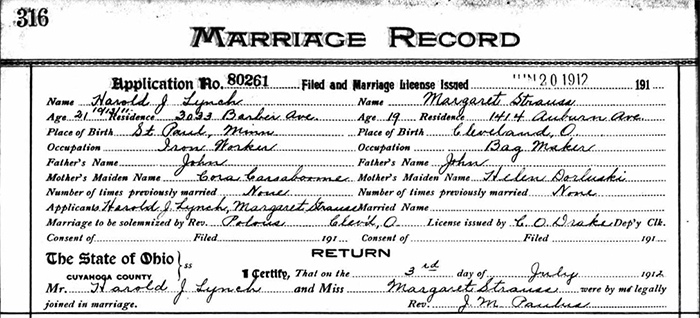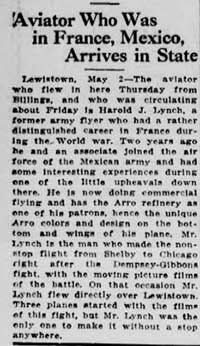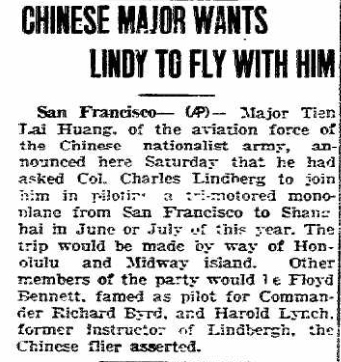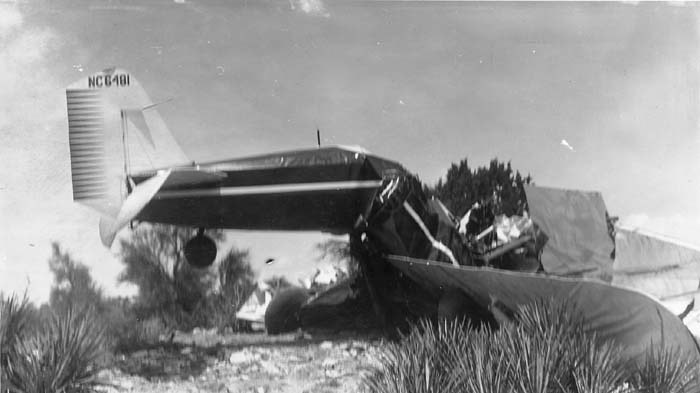THANK YOU!
YOUR PURCHASE OF THESE BOOKS SUPPORTS THE WEB SITES THAT BRING TO YOU THE HISTORY BEHIND OLD AIRFIELD REGISTERS
Your copy of the Davis-Monthan Airfield Register with all the pilots' signatures and helpful cross-references to pilots and their aircraft is available at the link. 375 pages with black & white photographs and extensive tables
---o0o---
The Congress of Ghosts (available as eBook) is an anniversary celebration for 2010. It is an historical biography, that celebrates the 5th year online of www.dmairfield.org and the 10th year of effort on the project dedicated to analyze and exhibit the history embodied in the Register of the Davis-Monthan Airfield, Tucson, AZ. This book includes over thirty people, aircraft and events that swirled through Tucson between 1925 and 1936. It includes across 277 pages previously unpublished photographs and texts, and facsimiles of personal letters, diaries and military orders. Order your copy at the link.
---o0o---
Military Aircraft of the Davis Monthan Register, 1925-1936 is available at the link. This book describes and illustrates with black & white photographs the majority of military aircraft that landed at the Davis-Monthan Airfield between 1925 and 1936. The book includes biographies of some of the pilots who flew the aircraft to Tucson as well as extensive listings of all the pilots and airplanes. Use this FORM to order a copy signed by the author, while supplies last.
---o0o---
Art Goebel's Own Story by Art Goebel (edited by G.W. Hyatt) is written in language that expands for us his life as a Golden Age aviation entrepreneur, who used his aviation exploits to build a business around his passion. Available as a free download at the link.
---o0o---
Winners' Viewpoints: The Great 1927 Trans-Pacific Dole Race (available as eBook) is available at the link. This book describes and illustrates with black & white photographs the majority of military aircraft that landed at the Davis-Monthan Airfield between 1925 and 1936. The book includes biographies of some of the pilots who flew the aircraft to Tucson as well as extensive listings of all the pilots and airplanes. Use this FORM to order a copy signed by the author, while supplies last.
---o0o---
Clover Field: The first Century of Aviation in the Golden State (available in paperback) With the 100th anniversary in 2017 of the use of Clover Field as a place to land aircraft in Santa Monica, this book celebrates that use by exploring some of the people and aircraft that made the airport great. 281 pages, black & white photographs.
---o0o---
YOU CAN HELP
I'm looking for information and photographs of pilot Lynch and his airplane to include on this page. If you have some you'd like to share, please click this FORM to contact me.
---o0o---
SPONSORED LINKS
PLEASE HELP KEEP THESE WEB SITES ONLINE
FOR YOUR CONVENIENCE
You may NOW donate via PAYPAL by clicking the "Donate" icon below and using your credit card. You may use your card or your PAYPAL account. You are not required to have a PAYPAL account to donate.
Or you can scan the QR code below with your mobile device and be linked to your PayPal app.
 |
|---|
Either way, when your donation clears the PAYPAL system, a certified receipt from Delta Mike Airfield, Inc. will be emailed to you for your tax purposes.
---o0o---
HAROLD JOHN "Jack" LYNCH
Jack Lynch was born October 13, 1892 (I have seen 1893, too) at Saint Paul, MN. He was a flight instructor during WWI at Chanute Field, Rantoul, IL and at Kelly Field, TX. He married Margaret Strauss July 3, 1912. Their marriage license, courtesy of ancestry.com, is below.
 |
Other than this certificate and a few news articles, I know little about Lynch's early life, education, military responsibilities or family life. The 1900 U.S. Census listed his residence as Lorain, OH living with his parents and two younger sisters and brother. The 1920 Census places him at age 27 living in a rented apartment with his wife, Margaret, and three children, Margarette (age 7), Loretta (6), and Harold (1). Listed as an "Iron Worker" on his marriage record, his occupation on the 1920 Census was listed as "machinist" in a factory.
By 1930, the Census placed him living with his wife and children at 2818 Sycamore Avenue, Los Angeles, CA, a neighborhood of neat bungalows today. He rented his home for $60/month. His occupation was cited as "aviator" in the "aviation" industry. If you can help fill in the blanks, please let me KNOW.
 |
Lynch was a commercial flyer and flight instructor at the Butte, MT National Airport. In 1923 he flew movie films from Shelby, MT to Chicago, IL (see below). An advertisement for the Schaeffer Service Station, and for Arro gasoline used by Lynch in the race, appeared in the Helena, MT Daily Independent of August 28, 1923, right, courtesy of Guest Editor Bob Woodling. Lynch wrote a testimonial letter praising the Arro product.
An interesting finding, unusual among Register pilots, is that Lynch was a flight instructor and barnstorming partner with Register pilot Charles Lindbergh. Lynch met Lindbergh in Nebraska in 1922. According to the Helena, MT Daily Independent of Sunday, May 22, 1927, Lynch and Lindbergh teamed with another pilot who owned and airplane and spent a year together barnstorming in Nebraska, Colorado, Kansas, Wyoming and Montana. In the beginning, Lindbergh was the mechanic and wing walker. Only later did Lynch teach him to fly. Lynch is quoted in the article, "If I remember right the first time Slim [Lindbergh's nickname] ever made a landing was at Lodge Grass near the Crow Agency."
 |
In another unidentified Helena, MT news article, left, from May 3, 1926 has Lynch landing at Lewiston, MT on the news film mission mentioned above. Before the days of video or satellite transmission, sporting and other newsworthy events were filmed and the film reels were then transported by the fastest method to where they could be viewed by the most people. In this case, the newsworthy event was the Jack Dempsey-Tommy Gibbons boxing match held July 4, 1923 (ticket, right). Because of the high ticket price ($30 for the "outer circle;" $50 for ringside), and the remoteness of Shelby, MT, the event was a money loser..
 |
Note this article also mentions the Arro refinery, producer of the gasoline praised by Lynch in the advertisement above. It seems that Lynch promoted the company with his airplane, which was painted with company colors, and probably advertising texts.
The news article, below, from the Chillicothe, MO Daily Constitution, describes his and Lindbergh's relationship in the air in 1922. If you note the date of these newspapers, the articles appeared during and just a week or so after Lindbergh's trans-Atlantic flight. The country and the world were riding high on Lindbergh-mania and everybody wanted a piece of Lindbergh.
 |
 |
Further to Lindbergh-mania, the article at right appeared in the Appleton, WI Post-Crescent on Saturday, January 21, 1928, about seven months after the trans-Atlantic flight. If Tien Lai Huang had his way, he and his company, including Lindbergh and Lynch, would be only the fifth airplane to cross the Pacific from San Francisco to Hawaii. And those flights had only been made recently. Nobody had crossed the entire tropical Pacific before. I doubt Lindbergh spent a lot of time pondering this invitation. Lynch even less. A similar article had appeared five months earlier in the Helena, MT Daily Independent, Monday, September 2, 1927, as well as in other local and national papers. News traveled a little slower back then.
Lynch landed at Clover Field six times between March, 1929 and December, 1931. At five landings he flew exclusively the Stearman C-3-B NC8814 operated by Transcontinental & Western Airlines (TWA), based at the Grand Central Air Terminal (GCAT). Lynch was a pilot for TWA.
His first landing was on Friday, March 22, 1929 at 9:00AM. He flew a Stearman C-3-B he identified as NC6481. The airplane was owned by W.H. Clark. Notably, Lynch and Clark were killed a few years later on May 15, 1932 when, on a training flight, their airplane crashed near Jerome, AZ. The grim aftermath of the crash is below.
 |
This photograph and the one below are from the Sharlot Hall Museum Web site (Prescott, AZ) and they are cited by call numbers at the end of the news article, below. The second photograph shows Clark and Lynch in front of their Stearman. The Museum caption for the photos is, "Jack Lynch and W. A. Clark III with their plane; plane after crash, Clark Airport, Arizona, April and May 1932." The identification of the men is unclear, as is the exact dates of the images. If you can differentiate the men, please let me KNOW. My guess is that Clark is on the left. Both men wear fashions of the era: knickers, knee socks and spectator shoes on Clark; jodhpurs, high boots and leather jacket on Lynch.
 |
The article, below, from the Verde Copper News in Jerome, was dated June 10, 1932 and republished as a historical piece in the May 15, 2015 issue of the paper. I captured the text below, because I'm not sure how long the link will live.
| 1932: CLEMENCEAU AIRPORT: Lynch and Clark Killed in Airplane Crash, May 15. BILL CLARK AND JACK LYNCH KILLED IN VERDE CRASH: Tragedy Comes During "Lesson." "Tragedy stalked two nationally known men and experienced aviators in the course of a 'blind' flying lesson yesterday afternoon and dashed them to instant death only a few miles from their home port, the Clemenceau field." Harold John "Jack" Lynch, 39, one of the few pilots in this country to hold a master pilot licence, with between 4000 and 5000 hours of flying experience, in every type of airplane made, and William "Bill" Andrews Clark, III, 29, holder of a private pilot licence, and descendant of the late noted Senator Clark, copper magnate of Montana, shared the same fate. "They took off from the Clemenceau port around two o'clock in a two-place, open- cockpit biplane, declared by Marcus A. Rawlins, manager of the airport, to have been in excellent mechanical condition. Forty minutes or so later they plunged to their deaths on a limestone-capped mesa on the Windmill ranch, six miles northeast of the airport and a half mile from the Verde river" ... east of "the Verde Country Club golf links." "It was the purpose of the flight for Lynch to instruct Clark in the practice of blind flying or flying only by the use of the instruments on the panel board. In other words the idea was to pretend Clark was flying amid dense clouds without being able to see the ground. But more than that --- he was supposed to be flying in the fog and have his plane go into a tail spin. The problem was to bring the ship out of the spin. In order to produce these conditions artificially a hood was stretched over the cockpit in which Clark was seated, so he could not see out." "Behind him in another cockpit was Lynch, who had a duplicate set of controls and a means of communicating with Clark. Lynch did not have any hood over his cockpit, but both fliers had on their parachutes." "At a height of 2500 or 3000 feet Clark, flying blind, went into a tailspin on purpose and after dropping perhaps half that distance snapped the plane out of it. Golfers playing on the links witnessed the lesson. The plane then proceeded northeasterly and when about two miles or so from the links, Clark went into a second tailspin, but the plane never righted." "Spectators who witnessed the fall notified the airport and in a few minutes Rawlins and another man took off in a training ship for the purpose of locating the fallen craft, hoping against hope the fliers had bailed out and were safe. But even from the height at which Rawlins was flying he discerned, his two flying friends had plunged into eternity. Hurrying back to the port, he gathered together some tools and made for the scene of the crash in an automobile, others following." "They found death had been instantaneous, when they reached the scene of the fall, after having had to tramp across some wild country for a distance of about a mile and a half from the nearest road. Both bodies were crushed badly. The hood, however, had been removed from Clark's cockpit, indicating it had been torn off at the last minute by the 'student,' and yet there were evidences to indicate neither Lynch nor Clark dreamed of the necessity of leaping for their lives. The ship landed on its nose and drove the engine clear under the front cockpit." "It was not long until thirty or forty cars had gathered at the roadside, their occupants scurrying over to the wreck in a stream. Word of the fatal accident spread rapidly, leaving an excited populace in its wake. It seemed hard to believe that ... Lynch, the fellow who gave Col. Charles A. Lindbergh his first lessons in flying and who barnstormed around the country, including up into Wyoming and Coloado, with 'Slim' Lindbergh, ... who for months taught transport pilots in Los Angeles and Kansas City how to fly 'blind' and come out of tailspins," plunged to his death. "Nauseated in a way at the horrible sight that greeted their eyes, the sweating men unhooked the ailerons and gently lifted the broken bodies out of their cockpits, wrapped them in their parachutes, lashed them to the ailerons just as though they were stretchers and then began the solemn march back to the road." "Justice of the Peace L. C. Jolly of Clarkdale was to have presided at a coroner's inquest this morning and there was the expectation that the department of commerce would make an investigation and full report, probably through the person of Ed Pettis of Tucson, inspector for that branch of the federal government in Arizona. But these official investigations very likely will not throw much light on the real cause of the tragedy." ... "This afternoon, the whole Verde Valley populace is feeing the weight of the tragedy. The bodies were taken to Ash Fork in time to meet the six-forty west-bound train for Los Angeles, where joint burial will take place. Two widows," Thelma (Wyatt) Clark and Margaret (Strauss) Lynch, and five children "are left as a consequence of yesterday's accident." "More than a year ago Clark moved to Clarkdale and from a survey of the possibilities he projected the formation of what became the Verde Valley Air Lines, Inc. Lynch joined him several months ago. The Clemenceau airport was built and last March 19 and 20 the field was dedicated with an air circus, in which more than twenty planes were entered." (see: The Verde Independent; "1932: CLEMENCEAU AIRPORT DEDICATION Attracts 6000 People March 19-21;" March 21, 2013.) "The airline company, it is believed, will be discontinued because Clark's leadership will be missing. Aviation in Yavapai County has been dealt a stunning blow by three fatal accidents, including the death of E. E. Feuerhelm of Phoenix, Standard Oil lubricating engineer, April 15, as the result of a crash on Mingus mountain." (see: The Verde Independent; "1932: AIRPLANE CRASH: Feuerhelm Killed, April 15;" April 15, 2013.) "Clark operated the Cord and Auburn automobile agency in Phoenix for some time, up to a year ago, and was also an officer in the Pilot-Ray Lamp corporation." "Young Clark's father, who was on route to France when informed by radiogram of his son's death, arranged to be transferred at sea to a returning steamer, it is understood." (Prescott Evening Courier; Monday, May 16, 1932; page 1, column 8, and page 7, columns 3-5) "DISCLOSES CAUSE OF DEATHS IN AIPLANE CRASH" During the regular weekly meeting of the Rotary Club in Clarkdale, "Marcus Rawlins, president of the Verde Valley Airlines, Inc., gave a report of the findings of the scientific investigation of the deaths of W. A. Clark, III, and H. J. Lynch, who lost their lives in an airplane crash May 15. The report conclusively proved that the accident was due to defective materials used in the bank and turn indicator instrument in the rear cockpit of the airplane." "This was the first public statement of the findings of Mr. Rawlins and others who worked on the scientific investigation. To illustrate his talk Mr. Rawlins displayed the instrument and microscopic photographs of the defective materials used in the indicator." (Verde Copper News; Jerome; June 10, 1932; page 1, column 4.) see: Sharlot Hall Museum; Library and Archives, Photographs: Jack Lynch and W. A. Clark, III, with their plane and plane after the crash; Call Number T-147P (t147pa and t147pb). |
Note the source of supplementary photographs at the bottom of the article just above. If you enter "T-147P" into the search box of the Museum's Web site, you'll be able to retrieve the two images. The real shame of this accident is that, after the fact, investigators discovered a defective flight instrument.
Below, Lynch's obituary as it appeared in the Butte Montana Standard of May 16, 1932. The text is transcribed because the newspaper image was very poor.
Harold J.”Jack” Lynch was born in Cleveland, O., and received his early education in the schools there. He gained his knowledge of aircraft and flying from his association and contacts with plane builders and pilots and through his own ingenuity. He was one of the few remaining "practical" pilots in the country. During the World war he was enlisted as an instructor for the army and held a commission of first lieutenant. After the war he located at Lincoln, Neb, where he was salesman of planes. Later he came to Montana with Col. Charles A Lindbergh, then a "chute" Jumper, and "Banty" Rodgers, a pilot. Lynch, while associated with Col Lindbergh and Rodgers, gave the former his preliminary instruction in flying a plane. Col. Lindbergh later completed his flying instruction at an army school. Lynch was later located at Red Lodge and Billings, where he owned and operated a flying school. Early in 1924, he came to Butte and delivered a plane to Matt Alexander, veteran Butte flyer. He became associated with Alexander and operated a school here until the latter part of 1927. During that time Lynch constructed a plane, piece by piece, which was later used for training purposes. In the early part of 1928 Lynch became associated with Bert Mooney and the Butte Aircraft school here as chief Instructor. Many of the well-known pilots of Butte, including Mooney and Harry Kinney of the police force, received their training from Lynch. The latter part of 1928, William A. Clark III purchased a plane and engaged Lynch as his pilot. Lynch and Clark then went to California, instructing transport pilots in blind flying entirely by instrument with a hood over the cockpit. The two men recently organized the Verde Valley Air Lines and at the present time were seeking a franchise for the operation of a mail and passenger line from Douglas, Ariz., to Las Vegas. Nev. Lynch is survived by two daughters, Loretta and Margarette; a son, Harold, and his widow. Clark is survived by his widow, a step–son and step-daughter. |
The other five landings by Lynch at Santa Monica were all during December, 1931, and all were flown in the TWA Stearman NC8814. All his passengers were unidentified, and all his flights were local from GCAT to Clover and return. And all the landings were unremarkable, except for the one on Thursday, December 17, 1931 at 10:15AM, where he noted in the Register, "Blind flying." This was about five months to the day before he lost his life.
Jack Lynch also landed twice and signed the Davis-Monthan Airfield Register. Both times he flew the Buhl NC7705. Please direct your browser to the airplane for details on those landings. Lynch flew with Transport license T1101.
---o0o---
SPONSORED LINKS
THIS PAGE UPLOADED: 06/25/15 REVISED: 08/03/15
